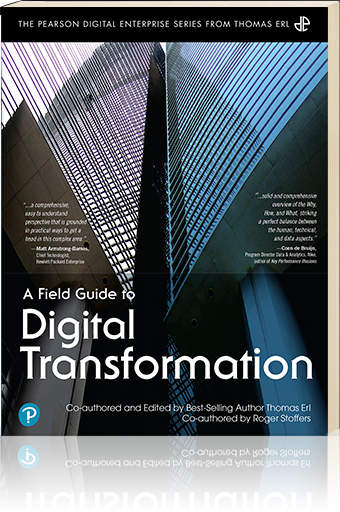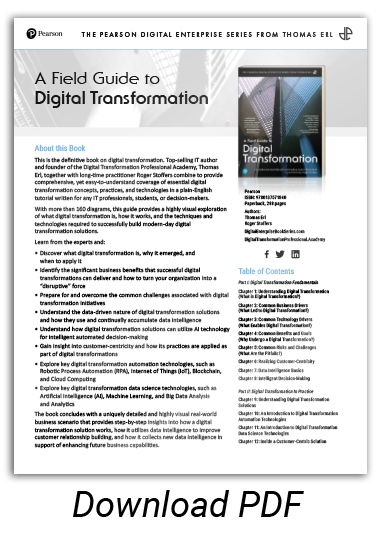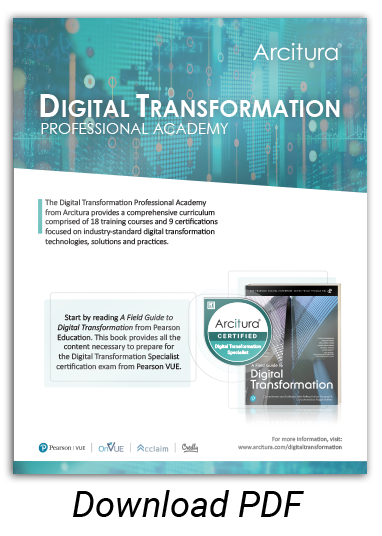Chapter Descriptions
This book is organized into two parts:
- Part I: Digital Transformation Fundamentals
- Part II: Digital Transformation in Practice
Part I provides simple and clear coverage of basic and essential digital transformation topics. The chapters in this part were deliberately authored with minimal references to technologies so that they can be fully understood by both technically and non-technically inclined readers.
Part I contains a set of short chapters that cover the following:
- What is Digital Transformation? (Chapter 1: Understanding Digital Transformation)
- What Led to Digital Transformation? (Chapter 2: Business Drivers)
- What Enables Digital Transformation? (Chapter 3: Technology Drivers)
- Why Undergo a Digital Transformation? (Chapter 4: Common Goals & Benefits)
- What are the Pitfalls of Digital Transformation? (Chapter 5: Common Risks & Challenges)
…and Part I continues with three further chapters that establish some basic terms and concepts vital to digital transformation:
- Chapter 6: Realizing Customer-Centricity
- Chapter 7: Data Intelligence Basics
- Chapter 8: Intelligent Decision Making
The chapters in Part II are focused on describing digital transformation in action. These chapters are technical, although all coverage of technologies is introductory.
Part II contains the following four chapters:
- Chapter 9: Understanding Digital Transformation Solutions
- Chapter 10: An Introduction to Digital Transformation Automation Technologies
- Chapter 11: An Introduction to Digital Transformation Data Science Technologies
- Chapter 12: Inside a Customer-Centric Solution
While Chapter 9 provides a brief overview of what comprises a digital transformation solution (or application), the next two chapters dive into the primary associated technologies. These chapters provide introductory coverage of each technology individually and also explain how each relates to digital transformation as a whole.
Chapter 12, the final chapter is this book, builds upon and brings together all preceding chapters by providing a detailed, step-by-step exploration of a sample business scenario, as carried out by a customer-centric digital transformation solution.




